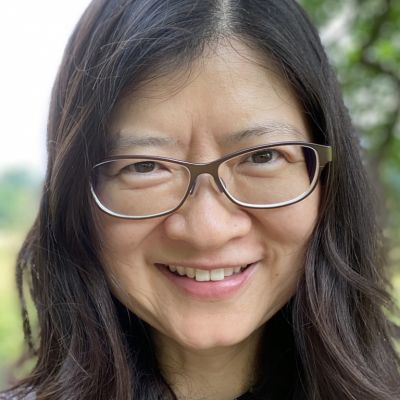- Speakers
Xin Yao

- Schedule
- Thursday 8 from 09:30 until 10:30 in Red Room
- Slides
- Download slides
- Description
To understand and impact a large-scale environment (a team, an enterprise, a society), we need effective modeling. Over the years DDD has gained a visible foothold in software-centric corporate change agendas.
In my work as a DDD evangelist and sociotechnical architect in large organizations, I’ve lived and breathed DDD to decouple domains and systems, to kickoff greenfield initiatives, to deploy brownfield modernization, and to design reteaming using the Inverse Conway Maneuvre and Team Topologies.
All that hard work has brought me many a pat on the shoulder. But time after time I’ve been surprised by how I/we could make things worse by attempting to make things better. I’ve been frustrated to witness bubbly energy and DDD enthusiasm from event storming workshops and alike evaporate like a deflated balloon. Improvements remained temporary and local. New practices failed to gain widespread adoption. I have to admit with absolute candor that it is so very hard to make lasting impact with DDD, or whatever else technology or tooling du jour.
In this talk, I will share my observations through the systems thinking lens, of what happened in a large change initiative in a big bank, where DDD played a central role. You will hear examples of sociotechnical systems dynamics and episodes about shifting dominance of competing feedback loops. You will be invited to partake in a postmortem forensic of what could have happened, what unfortunately didn’t happen, and the many what-if’s of alternate realities, or pasts. For people new to systems thinking, a positive side benefit can be a sneak peak into systems modeling building blocks and systems archetypes.
As a community, we’ve come a long way modeling software-centric systems, thanks to practice like DDD, architecture and Team Topologies. But what about the runtime dynamics of large human systems in our working environment, especially when such systems are full of fixes that don’t work? As software professionals, can we just tell jokes about SAFe, about policy makers in our company who can copy the Spotify Model, but not paste it? Or should we give the usual shrug – “it’s the system’s fault”?
From a systems standpoint, we are part of the same mess. If we can become better at seeing and naming the elephants in the room, not as random events, but as systemic patterns described through a consistent systems language, then the current messy reality is no longer our enemy but our ally. It can become a generative force for us to identify leverage and sustain influence in large organizational spaces.
I hope this talk will spark interest in system dynamics modeling. It is a call to action for boundary spanners and design-oriented change agents to explore abstractions, heuristics, modeling and visualization techniques to articulate and reason about dynamic system behavior.
How can we architect shared experiences to surface mental models so they can be challenged, improved and no longer stand in the way of change? With the rising initiative fatigue in large enterprises, how do we collectively discover leverage points, design and deploy systemic interventions with long lasting impacts?
About Xin Yao
SessionizeXin is a sociotechnical architect, DDD evangelist and independent consultant. She believes that a product, domain and team-oriented architecture is the super glue to bind multiple agile teams navigating toward a common horizon. She’s spearheaded large-scale change initiatives in boundary-spanning architect roles, weaving together strategy, products, teams, systems, domains into coherent models to guide progress and reduce stress. She architects collective experiences in scale-ups and enterprises to unravel complexity and discover leverage points. In sociotechnical environments where a team’s cognitive capacity is under constant stress, she practices domain-driven design and facilitates collaborative modeling to help teams and organizations make sense, make decisions and make intuitive business software.